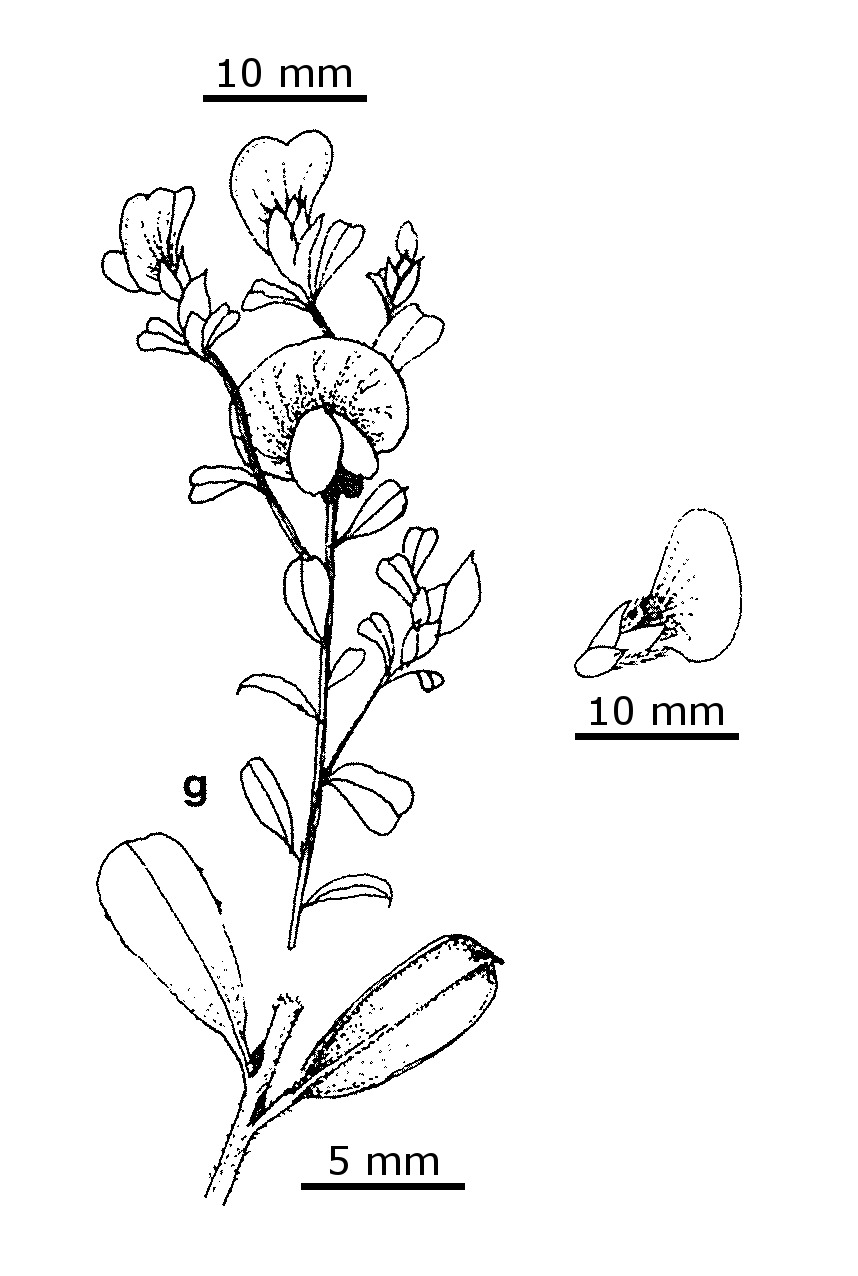Pultenaea victoriensis
CorrickShrub to 3 m high; young stems with appressed tubercle-based hairs. Leaves alternate, cuneate or obovate to oblong, 4–15 mm long, 2–5 mm wide; apex obtuse or emarginate with short, blunt, recurved mucro; upper surface glabrous, shining; lower surface dull, paler than upper; midrib prominent, minutely tuberculate; margin slightly recurved; stipules 1–2 mm long, appressed to stem. Inflorescence a single flower, rarely 2, at tips of short, lateral branches; bracts 6–9 per flower, widely to narrowly ovate, 1.5–8 mm long, pubescent at base, margin ciliate, inner bracts deciduous, outer 2 or 3 bracts smaller, persistent; calyx 6–8 mm long, densely pubescent; bracteoles attached at middle of calyx tube, ovate, 3.5–5 mm long; standard 11–14 mm wide; ovary and base of style densely covered with appressed hairs. Pod broadly ovate, lower half pubescent and enclosed by calyx. Flowers Nov.–Dec.
GGr. Confined to the high rocky slopes of the Victoria Range between the Chimney Pot and Mt Thackeray above c. 800 m alt.
Pultenaea victoriensis has been confused with forms of P. scabra from which it is distinguished by the usually single-flowered inflorescence with persistent bracts and the glabrous leaves with small appressed stipules.
Corrick, M.G. (1996). Pultenaea. In: Walsh, N.G.; Entwisle, T.J., Flora of Victoria Vol. 3, Dicotyledons Winteraceae to Myrtaceae, pp. 765–793. Inkata Press, Melbourne.
 Spinning
Spinning